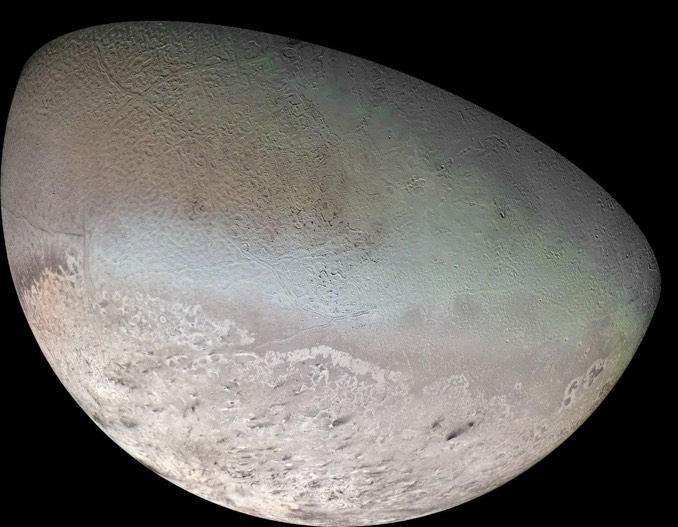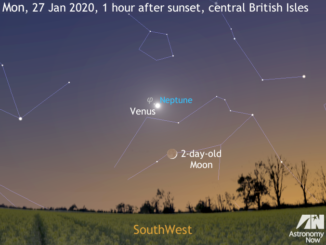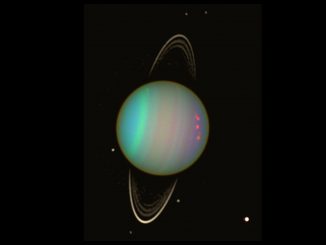Thirty years ago, on 25 August 1989, NASA’s Voyager 2 spacecraft flew past Neptune, beaming back the first, and so far only, close-up pictures of the giant planet, its tenuous ring system and multiple moons, including its largest satellite Triton. It was the final flyby in a “Grand Tour” of the outer solar system that carried Voyager 1 past Jupiter, Saturn and the ringed planet’s enigmatic moon Titan while Voyager 2 added Uranus and Neptune to the list. This spectacular image of Neptune shows a huge storm system dubbed the Great Dark Spot that has since disappeared.

Five hours after passing over Neptune’s north polar region, Voyager 2 raced past Triton in one of the most surprising moments of the encounter. The spacecraft’s cameras revealed a geologically active world with dark smears indicating geysers of nitrogen gas and dust spewing up to 8 kilometres (5 miles) above the icy crust. Voyager 2’s photos of Triton prompted gasps among researchers and space reporters alike when first unveiled.

“The Voyager planetary program really was an opportunity to show the public what science is all about,” said Ed Stone, a professor of physics at Caltech and Voyager’s project scientist for the past 44 years. “Every day we learned something new.”
Both Voyagers have now left the solar system, still sending back data about particles and fields in the interstellar environment. At the time of the Neptune flyby three decades ago, Voyager 2 was about 4.7 billion kilometres from Earth (2.9 billion miles). It is now 18 billion kilometres out (11 billion miles).



